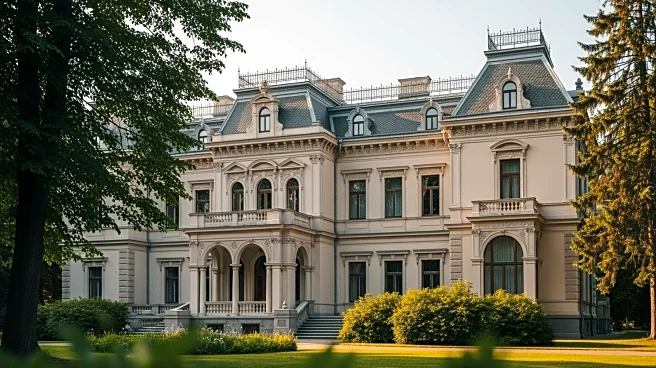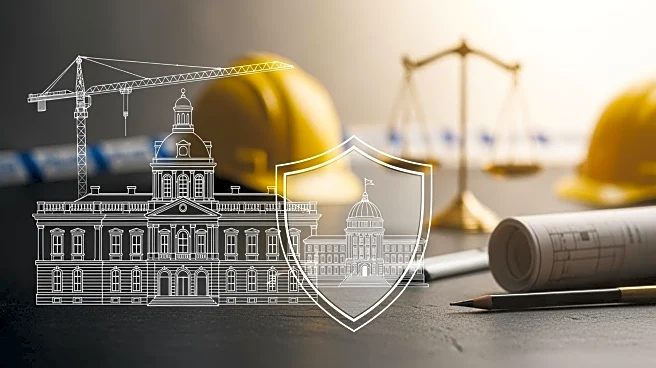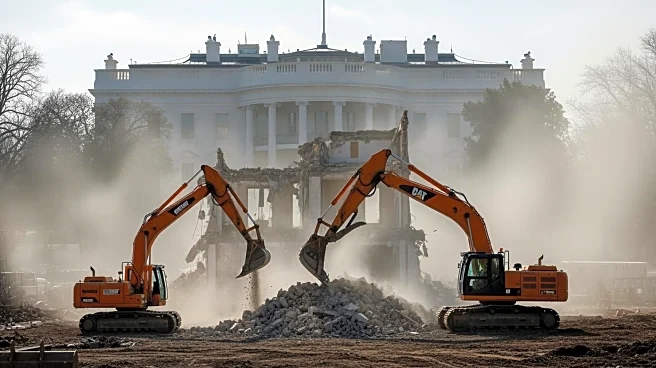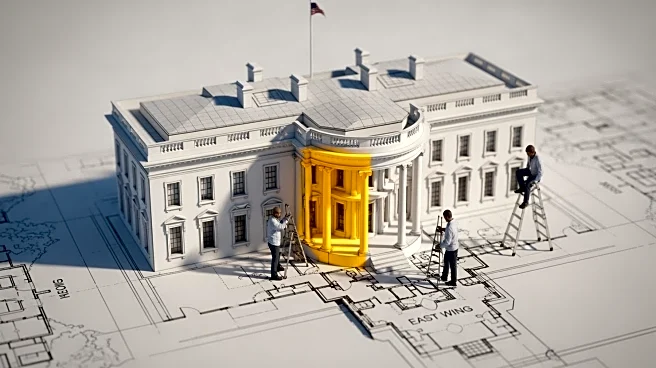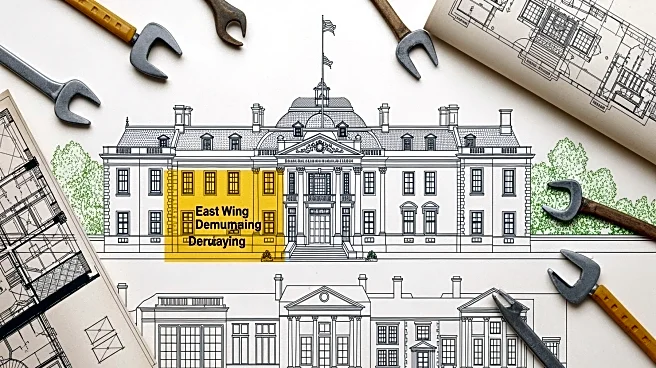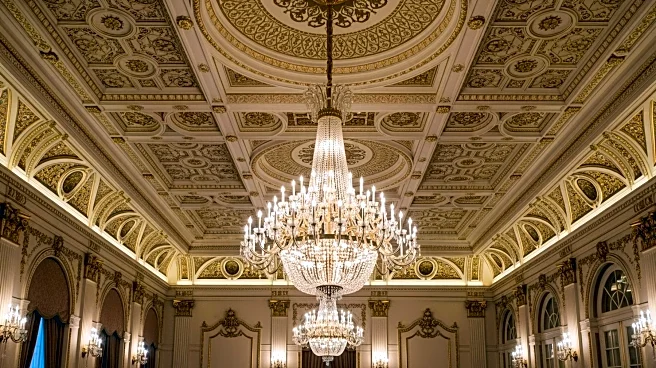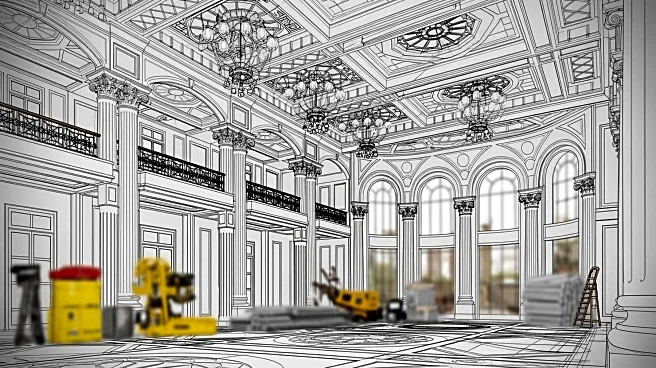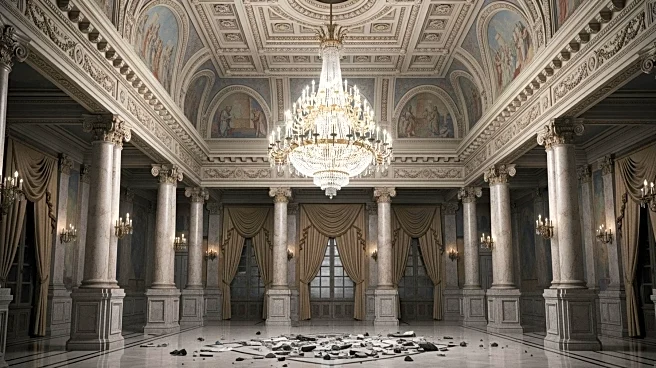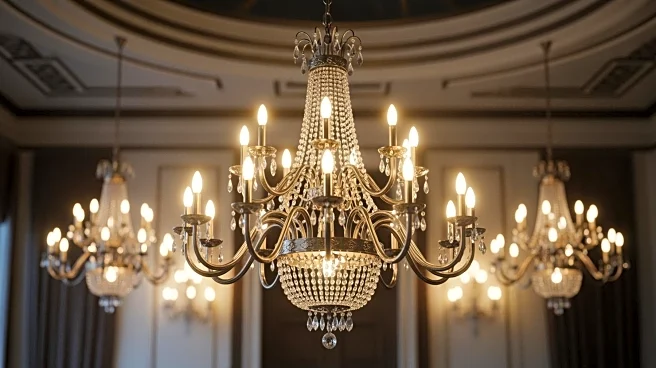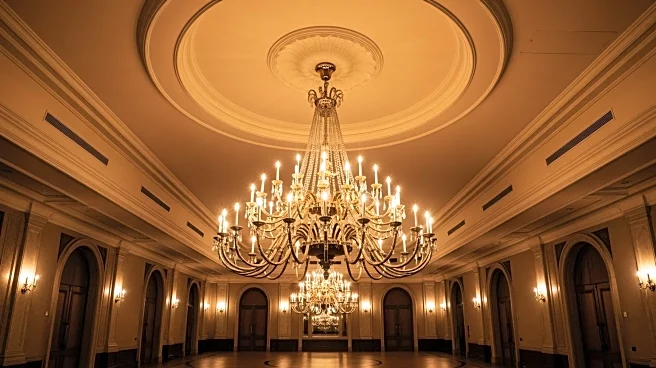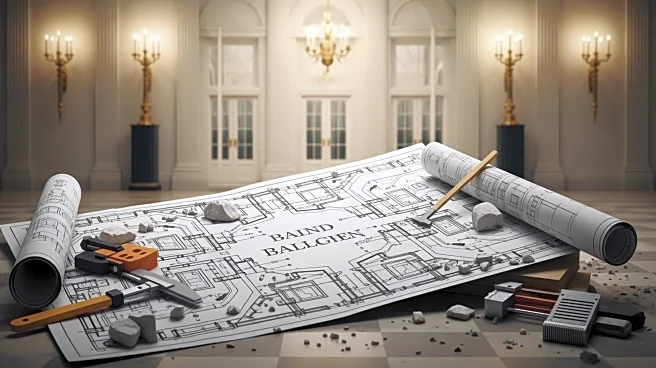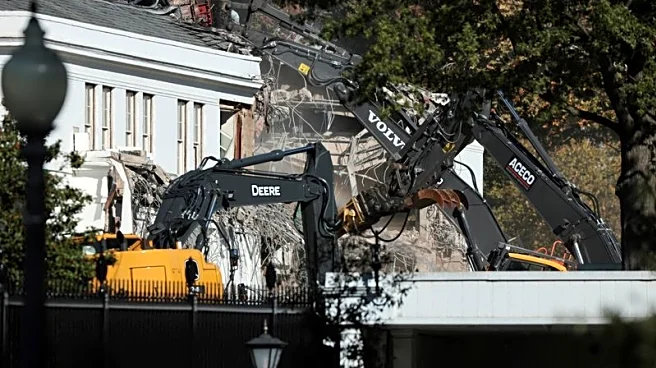What's Happening?
The Trump administration has initiated the demolition of the East Wing of the White House, a section historically associated with American first ladies since the Carter administration. This move is part of a larger renovation project to construct a new
$300 million ballroom. The demolition has sparked criticism from historians and former East Wing staffers, who view the structure as a significant part of American history. Despite the controversy, First Lady Melania Trump has remained silent on the issue, a stance that has surprised many observers. The East Wing has served as the headquarters for presidential spouses and housed various offices, which have now been relocated to other parts of the White House and the Eisenhower Executive Office Building.
Why It's Important?
The demolition of the East Wing raises significant concerns about the preservation of historic structures versus the need for modernization. The East Wing has been a symbol of the role of first ladies in American history, and its destruction could be seen as diminishing the historical significance of their contributions. The lack of response from Melania Trump highlights a shift in the traditional role of the first lady, potentially setting a precedent for future administrations. This development could impact public perception of the Trump administration's respect for historical preservation and its priorities in terms of White House renovations.
What's Next?
As the demolition progresses, it remains to be seen how the public and historians will react to the changes. The construction of the new ballroom may face further scrutiny and debate over its necessity and impact on the White House's historical integrity. The administration may need to address concerns from preservationists and the public to mitigate backlash. Additionally, the relocation of offices previously housed in the East Wing could lead to logistical challenges and adjustments for White House staff.
Beyond the Headlines
The decision to demolish the East Wing could have long-term implications for how future administrations approach the balance between modernization and historical preservation. It raises questions about the role of the first lady and how it may evolve in the future. The project also highlights the broader issue of how historical sites are valued and preserved in the face of modern needs and political agendas.
